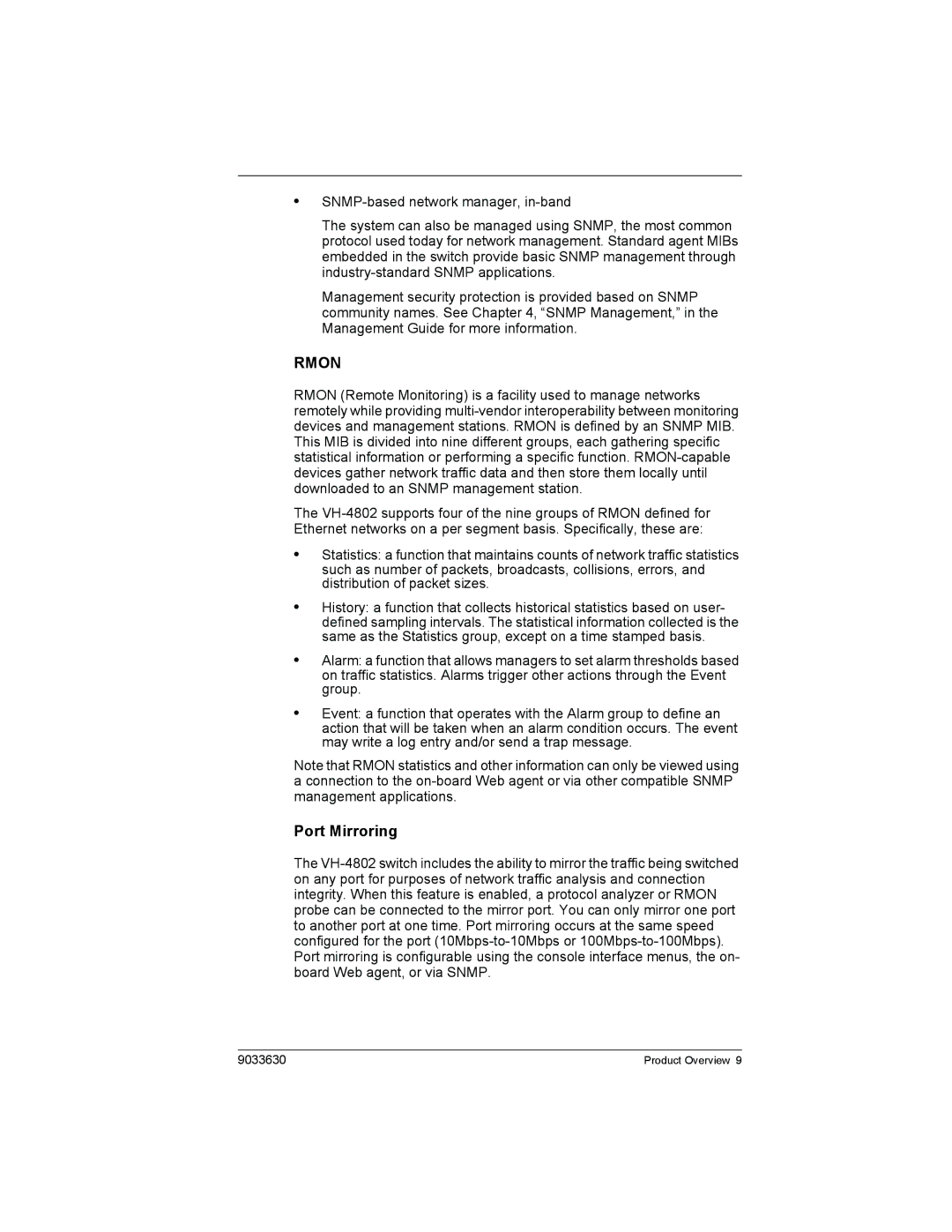
•
The system can also be managed using SNMP, the most common protocol used today for network management. Standard agent MIBs embedded in the switch provide basic SNMP management through
Management security protection is provided based on SNMP community names. See Chapter 4, “SNMP Management,” in the Management Guide for more information.
RMON
RMON (Remote Monitoring) is a facility used to manage networks remotely while providing
The
•Statistics: a function that maintains counts of network traffic statistics such as number of packets, broadcasts, collisions, errors, and distribution of packet sizes.
•History: a function that collects historical statistics based on user- defined sampling intervals. The statistical information collected is the same as the Statistics group, except on a time stamped basis.
•Alarm: a function that allows managers to set alarm thresholds based on traffic statistics. Alarms trigger other actions through the Event group.
•Event: a function that operates with the Alarm group to define an action that will be taken when an alarm condition occurs. The event may write a log entry and/or send a trap message.
Note that RMON statistics and other information can only be viewed using a connection to the
Port Mirroring
The
9033630 | Product Overview 9 |
